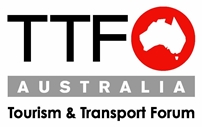
Tourism spending in Australia exceeds $100 billion: But now the hard work begins, says TTF
Australia’s tourism industry has today reinforced its claim to be the nation’s next super-growth industry, with new figures showing that domestic and international tourists spent more than $100 billion here last year.
But Tourism & Transport Forum, Australia’s leading tourism advocacy group, warned that growth would only be maintained by continued investment in new tourism product, improvement in traveller infrastructure and ongoing commitment to original and engaging tourism marketing.
The Chief Executive Officer of TTF, Margy Osmond, welcomed the National Visitor Survey, released today for the year ending December 2016, which showed that domestic visitors spent $61 billion on tourism at home, while the recently-released International Visitor Survey showed overseas tourists spent $39.1 billion in Australia – a collective increase of $5.6 billion over the previous year.
“Tourism has always been a core and critical industry in Australia,” Ms Osmond said. “But now, as other key industries slow, the rise of tourism is more important than ever before to national employment and to economic growth.”
Ms Osmond welcomed the news from the National Visitor Survey that states and territories had achieved double-digit growth in visitor nights and visitor numbers over the past three years, and urged continued investment in new tourism product and marketing, to ensure that the growth continued.
“We can’t afford to switch to cruise control, now that we’ve reached the magical 100 billion dollar mark,” Ms Osmond said.
“With international markets growing, particularly China and greater Asia, we now have much bigger opportunities than ever before, but also much bigger challenges of building our visitor economy in the face of fierce competition from other markets.”
Ms Osmond said there was a particular need for luxury product, particularly accommodation of five-star and higher quality, to meet the growing demand from Asia for ‘high-end’ holiday experiences.
Investment in infrastructure such as transport and public Wi-Fi access, and clever marketing is also essential to ensure that Australia’s offering stands out among competing global tourism campaigns.
Ms Osmond said separate, clear marketing was particularly important for the Queensland tourism industry, following yesterday’s devastating cyclone in the Whitsunday region.
“The Whitsundays are an integral part of Queensland’s, and Australia’s, national tourism product, and it is important that as the region returns to normal – as it will – this message is conveyed clearly and broadly, to entice visitors back as soon as possible,” Ms Osmond said.
“But there is also the immediate need to communicate clearly to those with existing holiday bookings, as well as those considering holidays, that the damage is confined to one area, and that the rest of Queensland is still very much open for business.”
